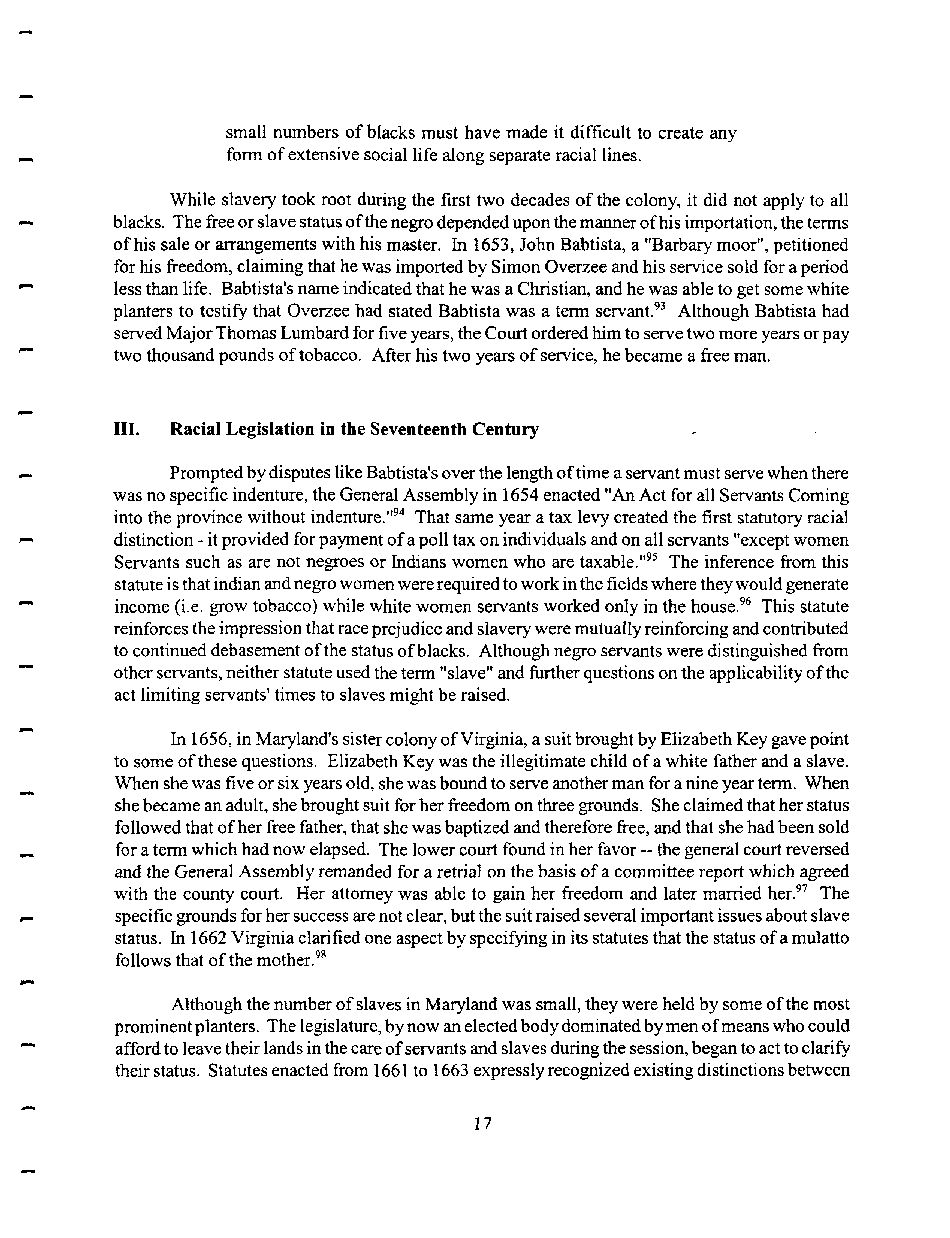|
small numbers of blacks must have made it difficult to create any
form of extensive social life along separate racial lines.
While slavery took root during the first two decades of the colony, it did not apply to all
blacks. The free or slave status of the negro depended upon the manner of his importation, the terms
of his sale or arrangements with his master. In 1653, John Babtista, a "Barbary moor", petitioned
for his freedom, claiming that he was imported by Simon Overzee and his service sold for a period
less than life. Babtista's name indicated that he was a Christian, and he was able to get some white
planters to testify that Overzee had stated Babtista was a term servant.93 Although Babtista had
served Major Thomas Lumbard for five years, the Court ordered him to serve two more years or pay
two thousand pounds of tobacco. After his two years of service, he became a free man.
III. Racial Legislation in the Seventeenth Century
Prompted by disputes like Babtista's over the length of time a servant must serve when there
was no specific indenture, the General Assembly in 1654 enacted "An Act for all Servants Coming
into the province without indenture."94 That same year a tax levy created the first statutory racial
distinction - it provided for payment of a poll tax on individuals and on all servants "except women
Servants such as are not negroes or Indians women who are taxable."95 The inference from this
statute is that indian and negro women were required to work in the fields where they would generate
income (i.e. grow tobacco) while white women servants worked only in the house.96 This statute
reinforces the impression that race prejudice and slavery were mutually reinforcing and contributed
to continued debasement of the status of blacks. Although negro servants were distinguished from
other servants, neither statute used the term "slave" and further questions on the applicability of the
act limiting servants' times to slaves might be raised.
hi 1656, in Maryland's sister colony of Virginia, a suit brought by Elizabeth Key gave point
to some of these questions. Elizabeth Key was the illegitimate child of a white father and a slave.
When she was five or six years old, she was bound to serve another man for a nine year term. When
she became an adult, she brought suit for her freedom on three grounds. She claimed that her status
followed that of her free father, that she was baptized and therefore free, and that she had been sold
for a term which had now elapsed. The lower court found in her favor — the general court reversed
and the General Assembly remanded for a retrial on the basis of a committee report which agreed
with the county court. Her attorney was able to gain her freedom and later married her.97 The
specific grounds for her success are not clear, but the suit raised several important issues about slave
status, hi 1662 Virginia clarified one aspect by specifying in its statutes that the status of a mulatto
follows that of the mother.98
Although the number of slaves in Maryland was small, they were held by some of the most
prominent planters. The legislature, by now an elected body dominated by men of means who could
afford to leave their lands in the care of servants and slaves during the session, began to act to clarify
their status. Statutes enacted from 1661 to 1663 expressly recognized existing distinctions between
17
�
|

